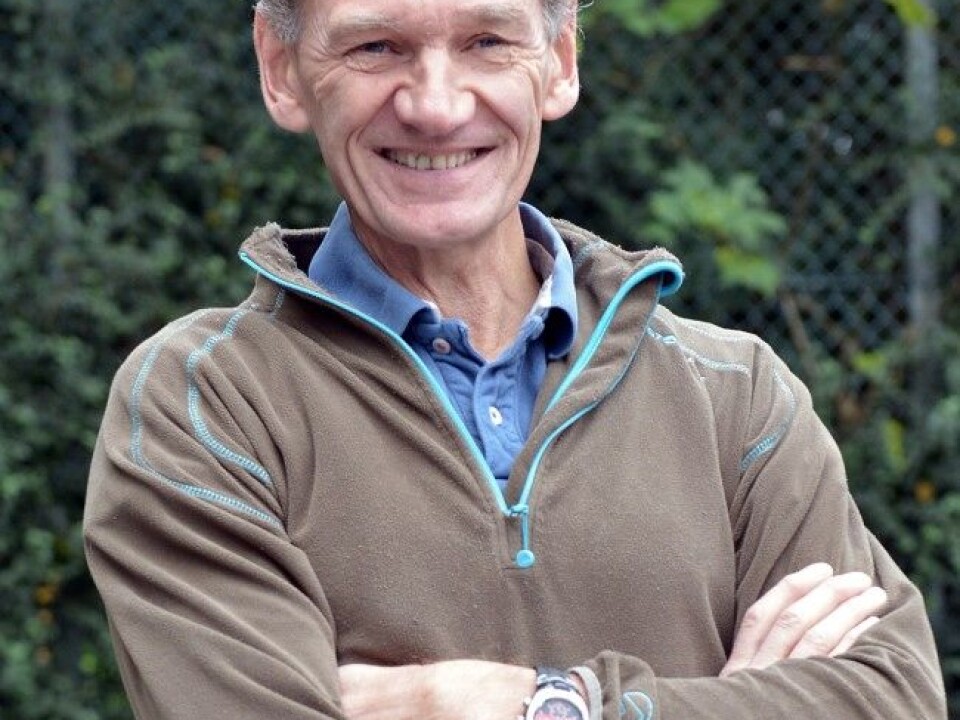This article was produced and financed by University of Stavanger

Fitness reporting scores a hit
A newspaper series about three people pursuing a keep-fit programme prompted many readers to start exercising themselves.
Denne artikkelen er over ti år gammel og kan inneholde utdatert informasjon.
Two researchers at University of Stavanger in Norway joined forces with regional daily Stavanger Aftenblad in a collaboration which represents a completely new approach to increasing participation in physical activity.
While a tailored programme with a personal trainer to provide social support and help change behaviour represents the most effective way to improve fitness, it is also the most expensive.
So the idea behind the university-newspaper collaboration was to scale up an individual keep-fit programme of this kind to embrace a large number of people.
“Whether you’re fit or unfit, the exercise principles are the same, and many people need help to get started,” says associate professor Sindre Dyrstad.

Together with professor Leif Inge Tjelta, he has written an article about the project which has been published by the Journal of Obesity.
Big implications internationally
The two academics see big implications in an international perspective for their findings from this project.
“USA Today, for instance, has a daily circulation of 1.8 million – which means it reaches 5.4 million people if we assume that each copy is read by three people,” notes Dyrstad.
“If this publication launched a corresponding programme which aroused a similar level of interest, it could get 700 000 people to start exercising.

“The effect of collaborating with major media players on such popular health measures could be very substantial.”
“However, one challenge is to make the big newspapers or broadcasters aware of the opportunities this approach offers to attract new readers or viewers,” adds Tjelta.
Increasingly sedentary
People in the developed world are increasingly sedentary at work and in their leisure activities. They also drive to and from the job, shops and so forth.
However, a survey found a desire for more exercise among no less than 76 percent of Norwegians not involved in one form or another of physical activity at least once a fortnight.
Such people, who are classified as physically inactive, also indicated that they needed more incentive or motivation to change their habits.
“That makes it very important to come up with new strategies which can increase the amount of physical exercise people take,” emphasises Dyrstad.
Unfit and overweight
Stavanger Aftenblad’s 180 000 readers were able to follow the progress of the three unfit and overweight adults who took part in the specially tailored programme for lifestyle change.
Tjelta, a former national athletics coach, drew up the weekly schedule. This was then published in the paper and on its website every Friday for 14 weeks.
It aimed to get the trio into such good shape that they would be able to run a half-marathon, or 21.1 kilometres, after completing the exercise course.
The actual programme was based on the principles applied by elite athletes – a weekly blend of two intensive interval-training sessions with a 90 percent pulse rate, and two subsequent spells of medium and low intensity exercise.
Broad coverage
The newspaper gave the project broad and substantial coverage, averaging three articles a week. That included the weekly exercise sessions and an overview of the trio’s progress.
All the articles appeared both in the printed edition and on the web. They usually involved a two-page spread with photographs, and the project featured on the front page once a week.
“This big coverage undoubtedly boosted reader interest,” says Tjelta. “Importantly, too, the project was a short enough to maintain its appeal but long enough to be effective.”
Open training
Readers were invited on three occasions to participate in an open interval training session with the three project participants, and 150 of them took advantage of this offer.
Six web meetings were also held on exercise, nutrition and other health and wellness issues. The researchers answered some 25-30 questions from readers in each two-hour session.
Hits on the project’s website, registered throughout the project, averaged 25 000 unique visitors a week. The journalist responsible for the articles also received a weekly average of 15 e-mail questions or comments.
Surprising spin-offs
The scheme had two surprising spin-offs, including the formation of a running group by people who had attended the three open keep-fit sessions.
A year after the project ended, 30-60 participants aged 15 to 73 – 70 percent of them women – were still meeting twice a week to run together. Ninety people in all have taken part.
In addition, the exercise programme was copied by Fedrelandsvennen, a regional daily in the city of Kristiansand south of Stavanger.
The two experienced researchers were surprised at the big interest aroused by the project.
“It shows that this type of measure can provide the motivation needed to get people up off the sofa,” says Tjelta.
Translated by: Rolf Gooderham

































